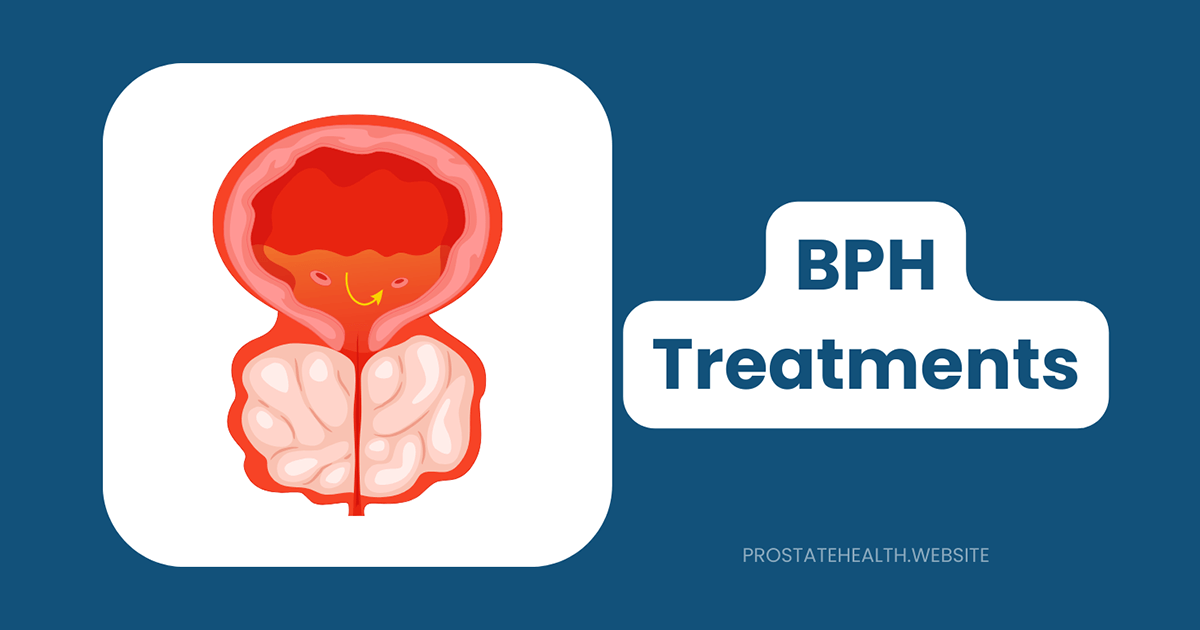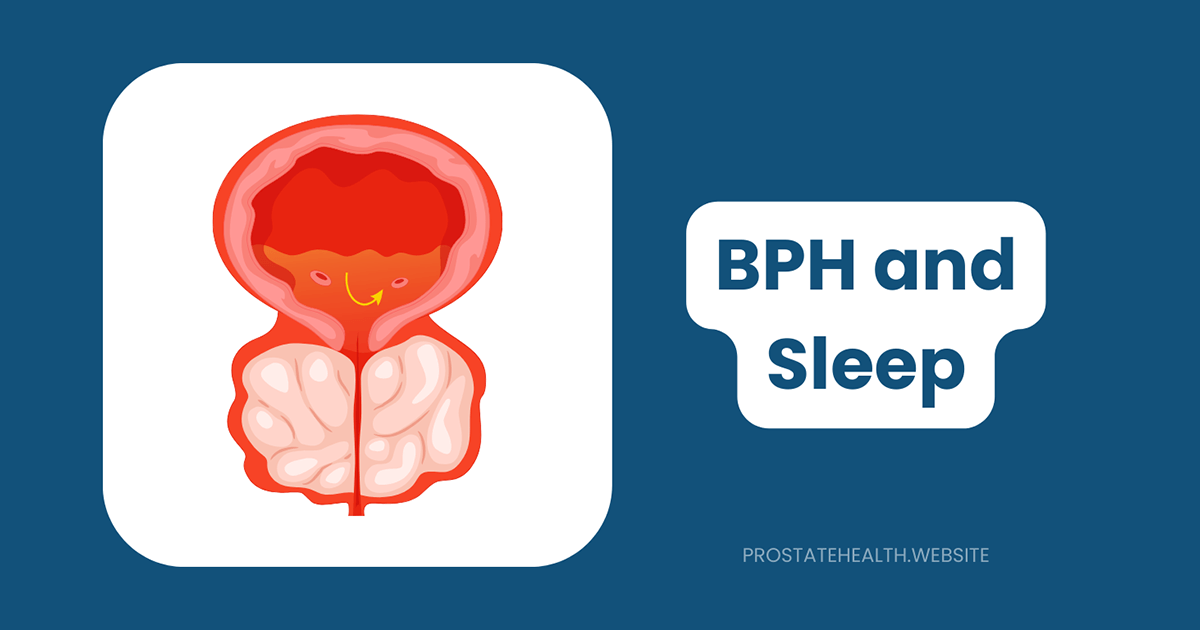New Minimally Invasive Treatments for BPH in 2025: Breaking Down the Latest Options

When David, a 62-year-old high school principal, first started experiencing urinary problems, he put off seeing a doctor. “I thought it was just part of getting older,” he admits. By the time he finally sought help, he was waking up four times a night and planning his day around bathroom access.
David’s story is all too common. Benign Prostatic Hyperplasia (BPH)—an enlarged prostate—affects approximately 50% of men in their 50s and up to 90% of men in their 80s. For decades, the treatment options were limited: medications with potential side effects or invasive surgeries with lengthy recovery times.
But 2025 has brought remarkable innovations in BPH treatment. Today’s minimally invasive options offer faster recovery, fewer side effects, and excellent results—often performed in outpatient settings with local anesthesia.
Let’s explore the cutting-edge treatments transforming prostate care this year.
Understanding BPH: Why New Treatments Matter
Before diving into treatments, it’s worth understanding what we’re treating. The prostate is a walnut-sized gland surrounding the urethra—the tube carrying urine from the bladder. As men age, the prostate naturally enlarges. When it grows enough to compress the urethra, it causes frustrating symptoms:
- Frequent urination (especially at night)
- Weak urine stream
- Difficulty starting urination
- Incomplete emptying of the bladder
- Sudden urges to urinate
Traditional treatments have included:
- Medications: Alpha-blockers and 5-alpha reductase inhibitors can help but often come with side effects like dizziness, sexual dysfunction, or decreased libido.
- TURP (Transurethral Resection of the Prostate): Long considered the gold standard surgical treatment, TURP involves removing prostate tissue through the urethra. While effective, it requires general anesthesia, hospitalization, and carries risks of bleeding, incontinence, and sexual side effects.
The newest minimally invasive treatments aim to provide relief with fewer risks, faster recovery, and preservation of sexual function. Let’s examine the most promising options available in 2025.
The Latest Minimally Invasive BPH Treatments in 2025
1. Butterfly Medical Device: A Revolutionary Approach
One of the most exciting developments presented at the American Urological Association’s 2025 Annual Conference is the Butterfly Medical device.
How it works: Unlike traditional approaches that cut or remove tissue, the Butterfly device uses a prostatic retraction mechanism to hold the enlarged tissue away from the urethra, improving urine flow.
Key benefits:
- Performed under local anesthesia
- No cutting or removal of tissue
- Fully reversible if needed
- Preserves future treatment options
- Can be performed in various clinical settings
Clinical evidence: The latest data presented at AUA 2025 shows significant, sustained improvements in lower urinary tract symptoms for up to five years post-treatment. The device already has CE Mark Approval in Europe and is currently undergoing pivotal clinical trials in the U.S.
Dr. Bilal Chughtai, who presented the trial results, noted: “What’s particularly promising about this approach is the combination of effectiveness with minimal side effects. Patients are experiencing substantial symptom relief without the sexual side effects often associated with more invasive procedures.”
2. Aquablation: Robotic Precision with Water Jets
Aquablation has gained significant traction in 2025 as a highly precise treatment option for BPH.
How it works: This procedure uses high-velocity water jets guided by real-time ultrasound imaging and robotic assistance to remove excess prostate tissue. The combination of imaging and robotics allows for unprecedented precision.
Key benefits:
- Suitable for prostates of all sizes, including very large ones
- Preserves sexual function better than traditional surgery
- Consistent results regardless of surgeon experience (thanks to robotics)
- Shorter hospital stays than traditional surgery
Clinical evidence: The WATER III trial results, comparing Aquablation to laser enucleation for large prostates (80-180 mL), showed comparable symptom improvement with significantly lower rates of sexual side effects. Only 15% of sexually active participants experienced retrograde ejaculation with Aquablation, compared to 77% with laser surgery.
Dr. Mark Sullivan, urologist at University Medical Center, explains: “Aquablation represents a significant advancement because it combines the effectiveness of more invasive surgeries with the reduced side effect profile of less invasive options. The robotic precision means we can be extremely targeted in tissue removal.”
3. Optilume BPH System: Drug-Coated Balloon Technology
The Optilume BPH Catheter System, which received FDA approval in 2023, has shown impressive results in 2025 clinical practice.
How it works: This innovative approach uses a balloon coated with the drug paclitaxel. The balloon dilates the prostatic urethra while simultaneously delivering the medication, which helps prevent the tissue from scarring and regrowing.
Key benefits:
- Outpatient procedure under local anesthesia
- No permanent implants left in the body
- Excellent preservation of sexual function
- Faster recovery compared to many alternatives
- Compatible with standard flexible cystoscopes
Clinical evidence: The latest data from the PINNACLE and EVEREST trials show unprecedented improvements in urinary flow rates (Qmax) compared to other minimally invasive options. Recovery times are also notably faster than with procedures like Rezūm.
“What’s remarkable about Optilume is how it combines mechanical dilation with drug delivery to create a lasting effect,” says Dr. Kevin Zorn, who has been at the forefront of implementing this technology. “Patients are experiencing significant symptom relief with minimal downtime.”
4. Prostate Artery Embolization (PAE): Cutting Off the Blood Supply
Prostate Artery Embolization has gained wider adoption in 2025 as more urologists and interventional radiologists collaborate on this innovative approach.
How it works: Rather than removing tissue, PAE works by blocking the blood vessels that feed the prostate. A catheter is inserted through a small incision in the groin or wrist and guided to the prostate arteries, where tiny particles are released to block blood flow, causing the prostate to shrink over time.
Key benefits:
- No cutting of prostate tissue
- Performed under light sedation
- Excellent preservation of sexual function
- Lower risk of urinary incontinence
- Effective for very large prostates
Clinical evidence: Long-term data now shows that over 76% of men report improved symptoms for up to 6.5 years following PAE. The procedure has also proven to be cost-effective compared to many surgical alternatives.
“PAE represents a paradigm shift in how we approach BPH,” explains Dr. Jennifer Martinez, an interventional radiologist. “Instead of removing tissue, we’re addressing the problem at its source by reducing blood flow to the prostate, allowing it to naturally shrink while preserving function.”
5. iTind: Temporary Implant, Lasting Results
The iTind (temporary implantable nitinol device) has seen refinements in 2025 that have improved its already impressive outcomes.
How it works: The iTind is a temporary device placed in the prostatic urethra in a folded configuration. Over 5-7 days, it gradually expands, creating channels in the prostate tissue. After this period, the device is removed, but the reshaping of the prostatic urethra remains.
Key benefits:
- No permanent implant
- No tissue cutting or removal
- Excellent preservation of sexual function
- Can be performed under local anesthesia
- Device is removed after 5-7 days
Clinical evidence: The latest data presented at the AUA2025 annual scientific meeting shows that iTind is particularly suitable for patients seeking short-term, reversible treatment with minimal impact on sexual function.
“What makes iTind unique is its temporary nature,” says Dr. Robert Chen, urologist. “The device is only in place for about a week, but it creates lasting changes to the prostatic urethra that provide long-term symptom relief.”
Comparing the Options: Which Treatment Is Right for You?
With so many innovative options available, how do you choose? Here’s a comparison to help guide your conversation with your urologist:
| Treatment | Best For | Procedure Time | Recovery Time | Sexual Function Preservation | Retreatment Rate (5 years) |
| Butterfly Device | Men seeking reversible options | 30-45 min | 1-2 days | Excellent | Data still emerging |
| Aquablation | Large prostates (40-150cc) | 45-60 min | 1-2 weeks | Very good (85% preserve ejaculation) | ~5% |
| Optilume BPH | Men prioritizing quick recovery | 30 min | 2-3 days | Excellent | Data still emerging |
| PAE | Very large prostates, high surgical risk | 1-2 hours | 1-2 days | Excellent | ~24% |
| iTind | Men seeking temporary intervention | 5-10 min (placement) | 1-2 days after removal | Excellent | ~10% |
| Rezūm | Small to medium prostates | 10-15 min | 1-2 weeks | Good (preserves ejaculation in ~80%) | ~6.8% |
| UroLift | Lateral lobe enlargement | 15-30 min | 2-3 days | Very good | ~10.9% |
Cost Considerations: What to Expect
The financial aspect of BPH treatment is an important consideration. A recent analysis of BPH treatment costs revealed significant variations:
- Rezūm has the lowest average total healthcare cost at approximately $2,500
- UroLift has higher initial costs but similar follow-up costs to TURP
- Aquablation costs are typically between traditional TURP and newer options
- PAE is generally less expensive than surgical options and covered by most insurance plans
- Newer options like Butterfly and Optilume are still establishing their cost profiles
Most insurance plans and Medicare now cover these minimally invasive options, recognizing their value in reducing long-term complications and retreatment rates.
Real Patient Experiences: Beyond the Clinical Data
While clinical data is crucial, hearing from men who’ve undergone these procedures provides valuable perspective.
Michael, 67, Aquablation patient: “After years of getting up 4-5 times a night, I finally decided to do something. The recovery was much easier than I expected—I was back to my normal activities within a week. Best of all, I haven’t had any sexual side effects, which was my biggest concern.”
Robert, 59, Optilume patient: “The procedure itself was quick, and I only needed local anesthesia. I had some discomfort for about 48 hours, but after that, I noticed immediate improvement in my urinary flow. Three months later, I’m sleeping through the night for the first time in years.”
James, 72, PAE patient: “As someone with a very large prostate who wasn’t a good candidate for surgery, PAE was a game-changer. The recovery was minimal—just a day of taking it easy. My symptoms improved gradually over a few weeks, and now, six months later, I feel like a new man.”
The Future of BPH Treatment: What’s on the Horizon
The rapid pace of innovation in BPH treatment shows no signs of slowing. Here’s what experts predict we’ll see in the coming years:
- AI-guided treatment selection: Artificial intelligence algorithms that analyze patient characteristics to recommend the optimal treatment approach
- Combination therapies: Protocols that combine minimally invasive treatments for enhanced effectiveness
- Biomarkers for BPH progression: Blood or urine tests that can predict which men will benefit most from early intervention
- Gene therapy approaches: Targeted treatments that address the underlying genetic factors contributing to prostate growth
- Enhanced imaging technologies: More precise visualization techniques to guide minimally invasive treatments
Dr. Sarah Johnson, Director of Men’s Health Research at University Medical Center, notes: “We’re entering an era of personalized prostate care. The goal is to match each patient with the treatment that will provide the best outcome based on their specific prostate anatomy, symptom profile, and personal preferences.”
Making Your Decision: Next Steps
If you’re experiencing BPH symptoms, here’s how to navigate your treatment options:
- Get a comprehensive evaluation: Before considering any treatment, ensure you have a proper diagnosis, including:
- Digital rectal exam
- PSA blood test (to rule out prostate cancer)
- Urinary flow studies
- Post-void residual measurement
- Prostate size assessment (ultrasound or MRI)
- Consider your priorities: Different treatments excel in different areas:
- Is preserving ejaculatory function critical for you?
- How quickly do you need to return to work or daily activities?
- Are you willing to accept a higher retreatment risk for fewer initial side effects?
- Do you have a very large prostate that might limit some options?
- Seek experienced providers: The newest techniques require specific training and experience. Ask potential providers:
- How many procedures have you performed?
- What are your patients’ typical outcomes?
- What complications have you encountered and how were they managed?
- Get a second opinion: BPH treatment is not one-size-fits-all. Different urologists may have different perspectives and expertise with various techniques.
Conclusion: A New Era for BPH Treatment
The days of limited options for BPH are behind us. In 2025, men facing prostate enlargement have access to an unprecedented array of minimally invasive treatments that can effectively address symptoms while preserving quality of life.
As David, our high school principal from the beginning of this article, discovered: “After years of suffering, I finally got treatment with the Optilume system. The procedure was quick, recovery was minimal, and I’m no longer planning my life around bathroom access. I only wish I hadn’t waited so long.”
With continued innovation and refinement of these techniques, the future looks bright for men’s prostate health. The key is not to suffer in silence—talk to your healthcare provider about which of these cutting-edge options might be right for you.






